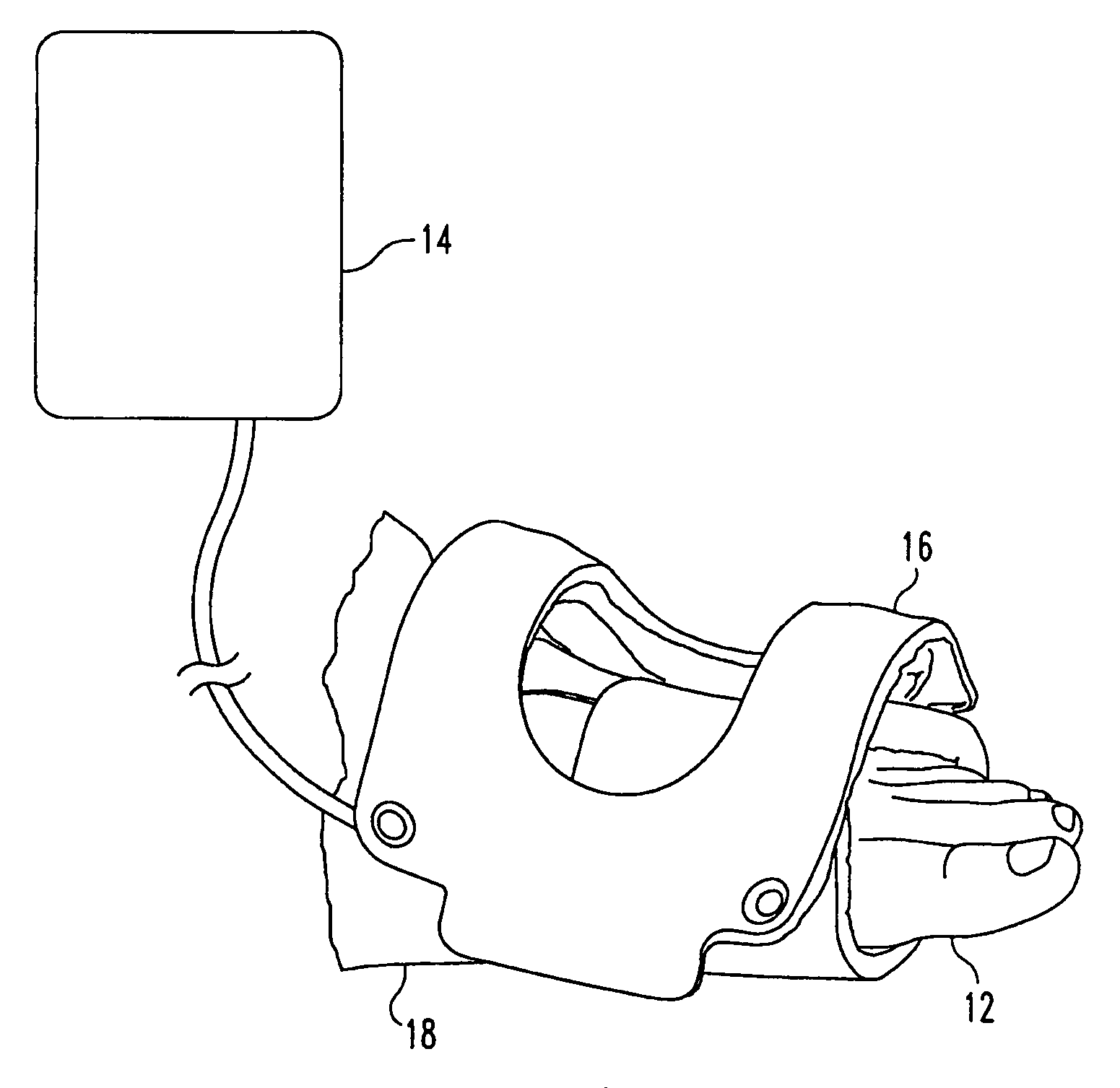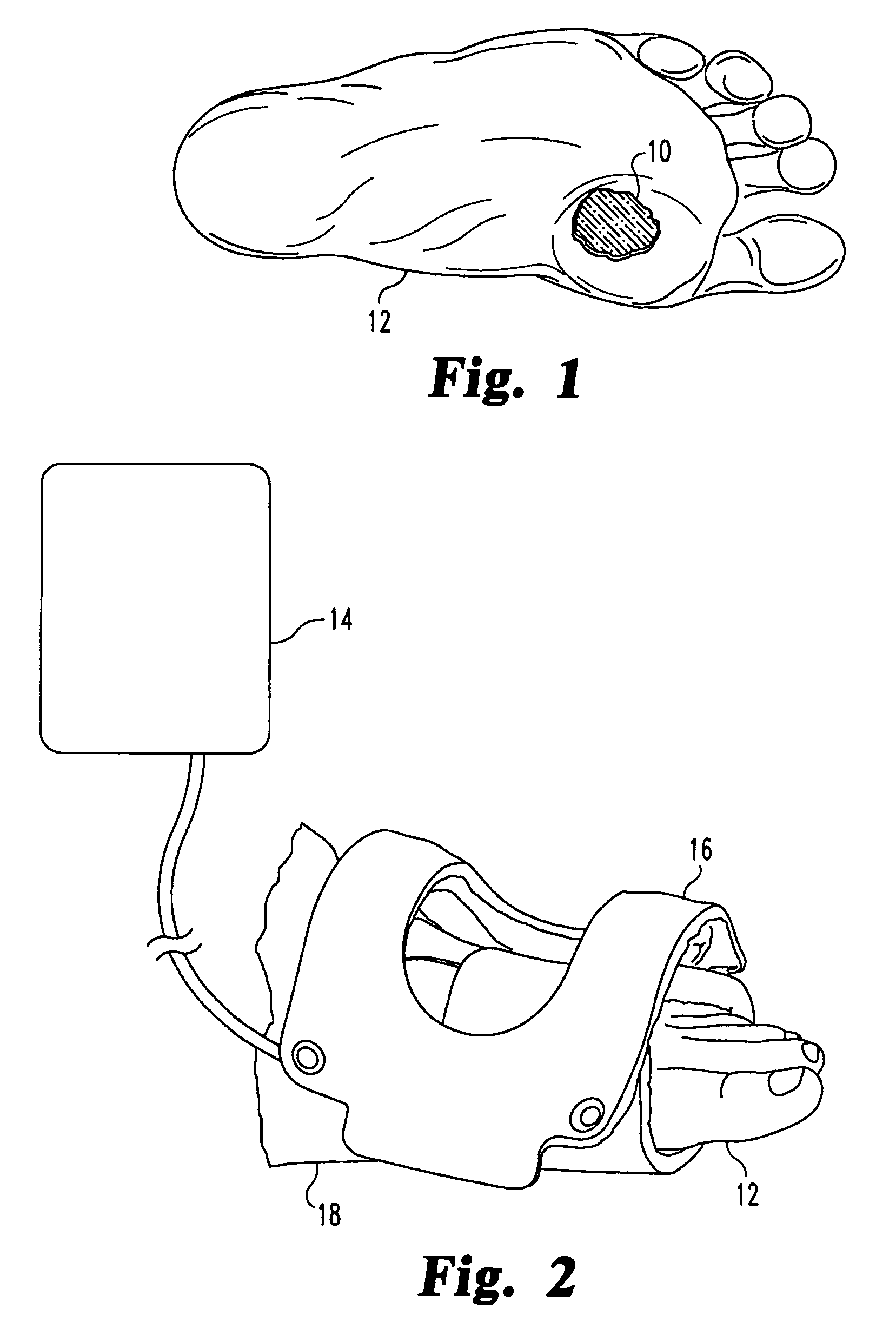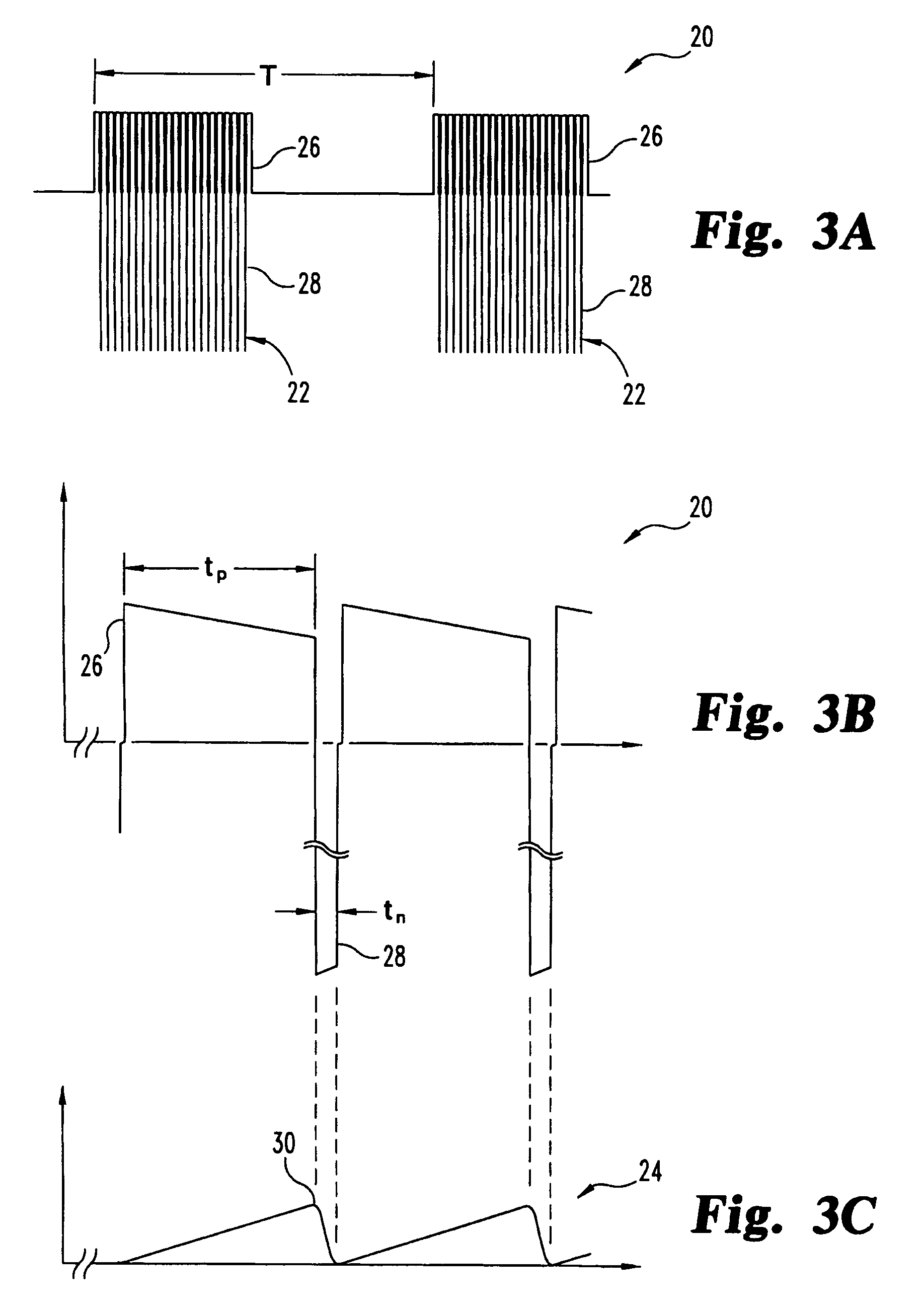Pulsed electromagnetic field method of treating soft tissue wounds
a soft tissue wound and electromagnetic field technology, applied in the field of wound treatment, can solve the problems of high care costs, chronic wound patients facing a lack of effective treatment options, and chronic wounds that tend to heal very slowly, not heal at all, and even worsen
- Summary
- Abstract
- Description
- Claims
- Application Information
AI Technical Summary
Problems solved by technology
Method used
Image
Examples
Embodiment Construction
[0017]For the purpose of promoting an understanding of the principles of the invention, reference will now be made to the embodiments illustrated in the drawings and specific language will be used to describe the same. It will nevertheless be understood that no limitation of the scope of the invention is thereby intended, such alterations and further modifications in the illustrated device and such further applications of the principles of the invention as illustrated therein being contemplated as would normally occur to one skilled in the art to which the invention relates.
[0018]Referring to FIGS. 1 and 2, a subject suffering from a soft tissue wound 10 on the foot 12 is treated with a pulsed electromagnetic field (PEMF) generated with a signal generator 14 and a treatment coil 16 which, in the example illustrated, is placed over the foot in a position to expose the wound on the ball of the foot to a pulsed electromagnetic field having the signal characteristics described herein. T...
PUM
 Login to View More
Login to View More Abstract
Description
Claims
Application Information
 Login to View More
Login to View More - R&D
- Intellectual Property
- Life Sciences
- Materials
- Tech Scout
- Unparalleled Data Quality
- Higher Quality Content
- 60% Fewer Hallucinations
Browse by: Latest US Patents, China's latest patents, Technical Efficacy Thesaurus, Application Domain, Technology Topic, Popular Technical Reports.
© 2025 PatSnap. All rights reserved.Legal|Privacy policy|Modern Slavery Act Transparency Statement|Sitemap|About US| Contact US: help@patsnap.com



